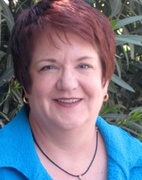
Stories about the strange things people swallow have been around for ages: coins, toys, buttons, safety pins, needles. For one doctor, however, the study of things going “down the hatch” became a quest for knowledge, resulting in techniques that helped save lives.
He carefully retrieved and documented more than 2,000 objects people had swallowed or inhaled including nails, bolts, miniature binoculars, a radiator key and even a medallion that says “Carry me for good luck." They included an American half-dollar, a beaded crucifix, tooth roots shaped like a tiny pair of pants, a padlock, a metallic letter Z, a toy goat, a tin steering wheel. Even a child’s “Perfect Attendance” pin.
Dr. Chevalier Jackson was a laryngologist (surgeon who treats disorders of the voice) in the late 19th and early 20th centuries. When he retrieved objects from people’s upper torsos, there was little to no anesthesia. Most people died from surgery in those days, but Jackson spent hundreds of hours studying swallowing and experimenting with ways to retrieve objects. The result was that he saved some 95 percent of the patients he treated for swallowed objects.
He catalogued each item - from thumbtacks to watches to miniature opera glasses. His meticulous written accounts of the extractions, along with his tools and the objects themselves, were put on display at a medical museum in Philadelphia.
University of Rhode Island English Professor Mary Cappello stumbled across the collection in 2006, and was driven to learn more. “I was initially struck by the strange nature of these things, the question of why someone would gather them together in one place, and the poetry of their arrangement in a magical set of drawers,” she said.
Cappello, a breast cancer survivor, is the author of “Called Back: My Reply to Cancer, My Return to Life.” She was intrigued by the curious doctor, and decided a book “was waiting to be written” about his life, his collection and the stories of his patients. The just-released “Swallow: Foreign Bodies, Their Ingestion, Inspiration, and the Curious Doctor Who Extracted Them” documents Jackson’s life and legacy.
Cappello describes him as a pioneer of the upper body who developed new endoscopic techniques. He attached a tiny light to the end of a rod that he inserted into his scopes. Prior to that doctors had worked with light held outside the body. She learned that Jackson inserted a long, rigid tube into patients to remove objects like coins and keys. Capello believes he must have had a gentle, calm nature about him to be able to persuade his patients to endure the procedure. She also notes that he treated many poor children without being paid.
The Mütter Museum of the College of Physicians of Philadelphia now owns the Jackson collection, and will open a refurbished exhibition on Feb 18, 2011. Cappello will be there too, sharing the tales of this eccentric doctor and his pioneering work. She also serves as co-curator of the collection.
More Information:
New York Times: Down the Hatch and Straight into Medical History
http://www.nytimes.com/2011/01/11/health/11swallow.html?_r=1&WT.mc_id=HE-SM-E-FB-SM-LIN-DTH-011011-NYT-NA&WT.mc_ev=click
Huffington Post: 13 Real and Imagined Things That People Have Swallowed (Photos)
http://www.huffingtonpost.com/mary-cappello/13-things-people-swallowed_b_812255.html#s227599&title=Real_or_Imaginary





Add a CommentComments
There are no comments yet. Be the first one and get the conversation started!